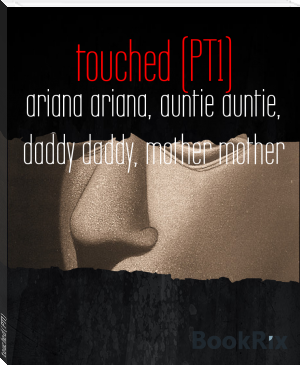THE OLD SANTA FE TRAIL by COLONEL HENRY INMAN (best fiction novels of all time .TXT) 📕

- Author: COLONEL HENRY INMAN
Book online «THE OLD SANTA FE TRAIL by COLONEL HENRY INMAN (best fiction novels of all time .TXT) 📕». Author COLONEL HENRY INMAN
Arapahoes, Which Always Took Place At Big Timbers, Near Fort William.
Hobbs Was Married to The Daughter Of Old Wolf, The Chief Of The
Comanches, A Really Beautiful Indian Girl, With Whom He Lived
Faithfully Many Years. In the Early Summer Of 1835, He Went With His
Father-In-Law And The Rest Of The Tribe To The Great Feast Of That
Season. He Stated that On That Occasion There Were Forty Thousand
Indians Assembled, And Consequently Large Hunting Parties Were Sent
Out Daily To Procure Food For Such A Vast Host. The Entertainment
Was Kept Up For Fifteen Days, Enlivened by Horse Races, Foot Races,
And Playing Ball. In these Races The Tribes Would Bet Their Horses
On The Result, The Comanches Generally Winning, For They Are The Best
Riders In the World. By The Time The Feast Was Ended, The Arapahoes
And Cheyennes Usually Found Themselves Afoot, But Old Wolf, Who Was A
Generous Fellow, Always Gave Them Back Enough Animals To Get Home With.
The Game Of Ball Was Played with Crooked sticks, And Is Very Much
Like The American Boys' "Shinny." The Participants Are Dressed in
A Simple Breech-Cloth And Moccasins. It Is Played with Great
Enthusiasm And Affords Much Amusement.
At These Annual Feasts A Council Of The Great Chiefs Of The Three
Tribes Is Always Held, And At The One During The Season Referred to,
Hobbs Said The Cheyenne Chiefs Wanted old Wolf To Visit Bent'S Fort,
Where He Had Never Been. Upon The Arrival Of The Delegation There,
It Was Heartily Welcomed by All The Famous Men Who Happened to Be At
The Place, Among Whom Were Kit Carson, Old John Smith, And Several
Noted trappers. Whiskey Occupied a Prominent Place In the Rejoicing,
And "I Found It Hard Work," Said Hobbs, "To Stand The Many Toasts
Drank To My Good Health." The Whole Party, Including Old Wolf And
His Companion The Cheyenne Chief, Got Very Much Elated, And Every
Person In the Fort Smelt Whiskey, If They Did Not Get Their Feet
Tangled with It.
About Midnight A Messenger Came Inside, Reporting That A Thousand
Comanche Warriors Were Gathering around The Fort. They Demanded
Their Leaders, Fearing Treachery, And Desired to Know Why Their Chief
Had Not Returned. Hobbs Went Out And Explained that He Was Safe;
But They Insisted on Seeing Him, So He And Hobbs Showed themselves
To The Assembled indians, And Old Wolf Made A Speech, Telling Them
That He And The Cheyenne Chief Were Among Good Friends To The Indians,
And Presents Would Be Given To Them The Next Morning. The Warriors
Were Pacified with These Assurances, Though They Did Not Leave The
Vicinity Of The Fort.
It Was At This Time That Hobbs Was Ransomed by Colonel Bent, Who Gave
Old Wolf, For Him, Six Yards Of Red flannel, A Pound Of Tobacco, And
An Ounce Of Beads.
The Chief Was Taken In charge By A Lieutenant, Who Showed him All
Over The Fort, Letting Him See The Rifle Port-Holes, And Explaining
How The Place Could Stand A Siege Against A Thousand Indians. Finally,
He Was Taken Out On The Parapet, Where There Was A Six-Pounder At
Each Angle. The Old Savage Inquired how They Could Shoot Such A Thing,
And At Hobbs' Request, A Blank Cartridge Was Put In the Piece And
Fired. Old Wolf Sprang Back In amazement, And The Indians On The
Outside, Under The Walls, Knowing Nothing Of What Was Going On,
Ran Away As Fast As Their Legs Could Carry Them, Convinced that
Their Chief Must Be Dead Now And Their Own Safety Dependent Upon
Flight. Old Wolf And Hobbs Sprang Upon The Wall And Signalled and
Shouted to Them, And They Returned, Asking In great Astonishment
What Kind Of A Monstrous Gun It Was.
About Noon Trading Commenced. The Indians Wished to Come Into The
Fort, But Bent Would Not Let Any Enter But The Chiefs. At The Back
Door The Colonel Displayed his Goods, And The Indians Brought Forward
Their Ponies, Buffalo-Robes, Deer And Other Skins, Which They Traded
For Tobacco, Beads, Calico, Flannel, Knives, Spoons, Whistles,
Jews'-Harps, Etc.
Whiskey Was Sold To Them The First Day, But As It Caused several
Fights Among Them Before Night, Bent Stopped its Sale, At Hobbs'
Suggestion And With Old Wolf'S Consent. Indians, When They Get Drunk,
Do Not Waste Time By Fighting With Fists, Like White Men, But Use
Knives And Tomahawks; So That A General Scrimmage Is A Serious Affair.
Two Or Three Deaths Resulted the First Day, And There Would Have Been
Many More If The Sale Of Whiskey Had Not Been Stopped.
The Trading Continued for Eight Days, And Colonel Bent Reaped a Rich
Harvest Of What He Could Turn Into Gold At St. Louis. Old Wolf Slept
In The Fort Each Night Except One During That Time, And Every Time
His Warriors Aroused him About Twelve O'Clock And Compelled him To
Show Himself On The Walls To Satisfy Them Of His Safety.
About A Hundred trappers Were In the Employ Of Bent And His Partners.
Sometimes One-Half Of The Company Were Off On A Hunt, Leaving But
A Small Force At The Fort For Its Protection, But With The Small
Battery There Its Defence Was Considered sufficient.
One Day A Trapping Party, Consisting Of Kit Carson, "Peg-Leg" Smith,
And James Hobbs, Together With Some Shawnee Indians, All Under The
Lead Of Carson, Started out From Bent'S Fort For The Picketwire To
Trap Beaver.
Grizzlies Were Very Abundant In that Region Then, And One Of The
Party, Named mcintire, Having Killed an Elk The Evening Before, Said
To Hobbs That They Might Stand A Good Chance To Find A Grizzly By
The Elk He Had Shot But Had Not Brought In. Hobbs Said That He Was
Willing To Go With Him, But As Mcintire Was A Very Green Man In the
Mountains, Hobbs Had Some Doubts Of Depending On Him In case Of An
Attack By A Grizzly Bear.
The Two Men Left For The Ravine In which Mcintire Had Killed the Elk
Very Early In the Morning, Taking With Them Tomahawks, Hunting-Knives,
Rifles, And A Good Dog. On Arriving at The Ravine, Hobbs Told
Mcintire To Cross Over To The Other Side And Climb The Hill, But On
No Account To Go Down Into The Ravine, As A Grizzly Is More Dangerous
When He Has A Man On The Downhill Side. Hobbs Then Went To Where He
Thought The Elk Might Be If He Had Died by The Bank Of The Stream;
But As Soon As He Came Near The Water, He Saw That A Large Grizzly
Had Got There Before Him, Having Scented the Animal, And Was Already
Making His Breakfast.
The Bear Was In thick, Scrubby Oak Brush, And Hobbs, Making His Dog
Lie Down, Crawled behind A Rock To Get A Favourable Shot At The Beast.
He Drew A Bead On Him And Fired, But The Bear Only Snarled at The
Wound Made By The Ball And Started tearing Through The Brush, Biting
Furiously At It As He Went. Hobbs Reloaded his Rifle Carefully,
And As Quickly As He Could, In order To Get A Second Shot; But,
To His Amazement, He Saw The Bear Rushing Down The Ravine Chasing
Mcintire, Who Was Only About Ten Feet In advance Of The Enraged beast,
Running For His Life, And Making as Much Noise As A Mad Bull. He Was
Terribly Scared, And Hobbs Hastened to His Rescue, First Sending His
Dog Ahead.
Just As The Dog Reached the Bear, Mcintire Darted behind A Tree And
Flung His Hat In the Bear'S Face, At The Same Time Sticking His
Rifle Toward Him. The Old Grizzly Seized the Muzzle Of The Gun In
His Teeth, And, As It Was Loaded and Cocked, It Either Went Off
Accidentally Or Otherwise And Blew The Bear'S Head Open, Just As The
Dog Had Fastened on His Hindquarters. Hobbs Ran To The Assistance
Of His Comrade With All Haste, But He Was Out Of Danger And Had Sat
Down A Few Rods Away, With His Face As White As A Sheet, A Badly
Frightened man.
After That Fearful Scare, Mcintire Would Cook Or Do Anything, But
Said He Never Intended to Make A Business Of Bear-Hunting; He Had
Only Wished for One Adventure, And This One Had Satisfied him.
Chapter XX (Pawnee Rock)That Portion Of The Great Central Plains Which Radiates From
Pawnee Rock, Including The Big Bend Of The Arkansas, Thirteen Miles
Distant, Where That River Makes A Sudden Sweep To The Southeast,
And The Beautiful Valley Of The Walnut, In all Its Vast Area Of
More Than A Million Square Acres, Was From Time Immemorial A Sort Of
Debatable Land, Occupied by None Of The Indian Tribes, But Claimed
By All To Hunt In; For It Was A Famous Pasturage Of The Buffalo.
None Of The Various Bands Had The Temerity To Attempt Its Permanent
Occupancy; For Whenever Hostile Tribes Met There, Which Was Of
Frequent Occurrence, In their Annual Hunt For Their Winter'S Supply
Of Meat, A Bloody Battle Was Certain To Ensue. The Region Referred
To Has Been The Scene Of More Sanguinary Conflicts Between The
Different Indians Of The Plains, Perhaps, Than Any Other Portion
Of The Continent. Particularly Was It The Arena Of War To The Death,
When The Pawnees Met Their Hereditary Enemies, The Cheyennes.
Pawnee Rock Was A Spot Well Calculated by Nature To Form, As It
Has Done, An Important Rendezvous And Ambuscade For The Prowling
Savages Of The Prairies, And Often Afforded them, Especially The
Once Powerful And Murderous Pawnees Whose Name It Perpetuates,
A Pleasant Little Retreat Or Eyrie From Which To Watch The Passing
Santa Fe Traders, And Dash Down Upon Them Like Hawks, To Carry Off
Their Plunder And Their Scalps.
Through This Once Dangerous Region, Close To The Silent Arkansas,
And Running Under The Very Shadow Of The Rock, The Old Trail Wound
Its Course. Now, At This Point, It Is The Actual Road-Bed of The
Atchison, Topeka, And Santa Fe Railroad, So Strangely Are The Past
And Present Transcontinental Highways Connected here.
Who, Among Bearded and Grizzled old Fellows Like Myself, Has Forgotten
That Most Sensational Of All The Miserably Executed illustrations
In The Geographies Of Fifty Years Ago, "The Santa Fe Traders Attacked
By Indians"? The Picture Located the Scene Of The Fight At Pawnee
Rock, Which Formed a Sort Of Nondescript Shadow In the Background
Of A Crudely Drawn Representation Of The Dangers Of The Trail.
If This Once Giant Sentinel[61] Of The Plains Might Speak, What A
Story It Could Tell Of The Events That Have Happened on The Beautiful
Prairie Stretching Out For Miles At Its Feet!
In The Early Fall, When The Rock Was Wrapped in the Soft Amber Haze
Which Is A Distinguishing Characteristic Of The Incomparable Indian
Summer On The Plains; Or In the Spring, When The Mirage Weaves Its
Mysterious Shapes, It Loomed up In the Landscape As If It Were A Huge
Mountain, And To The Inexperienced eye Appeared as If It Were The
Abrupt Ending Of A Well-Defined range. But When The Frost Came,
And The Mists Were Dispelled; When The Thin Fringe Of Timber On The
Walnut, A Few Miles Distant, Had Doffed its Emerald Mantle, And
The Grass Had Grown Yellow And Rusty, Then In the Golden Sunlight
Of Winter, The Rock Sank Down To Its Normal Proportions, And Cut
The Clear Blue Of The Sky With Sharply Marked lines.
In The Days When The Santa Fe Trade Was At Its Height, The Pawnees
Were The Most Formidable Tribe On The Eastern Central Plains, And
The Freighters And Trappers Rarely Escaped a Skirmish With Them
Either At The Crossing Of The Walnut, Pawnee Rock, The Fork Of The
Pawnee, Or At Little And Big Coon Creeks. To-Day What Is Left Of
The Historic Hill Looks Down Only Upon Peaceful Homes And Fruitful
Fields, Whereas For Hundreds Of Years It Witnessed nothing But Battle
And Death, And Almost Every Yard Of Brown Sod At Its Base Covered
A Skeleton. In place Of The Horrid Yell Of The Infuriated savage,
As He Wrenched off The Reeking Scalp Of His Victim, The Whistle Of
The Locomotive And The Pleasant Whirr Of The Reaping-Machine Is





Comments (0)